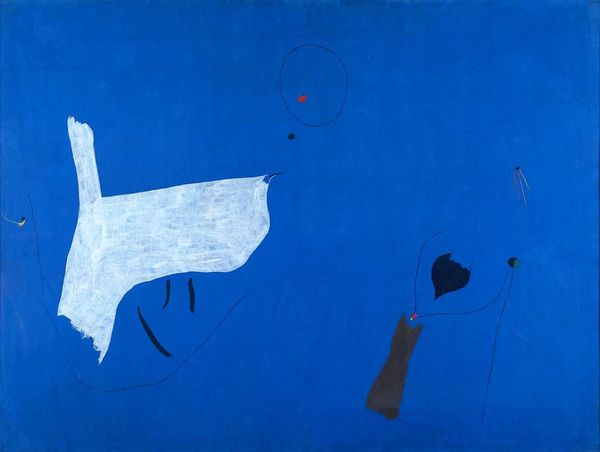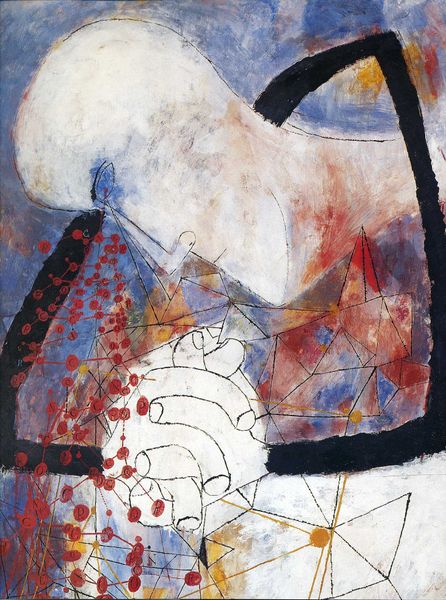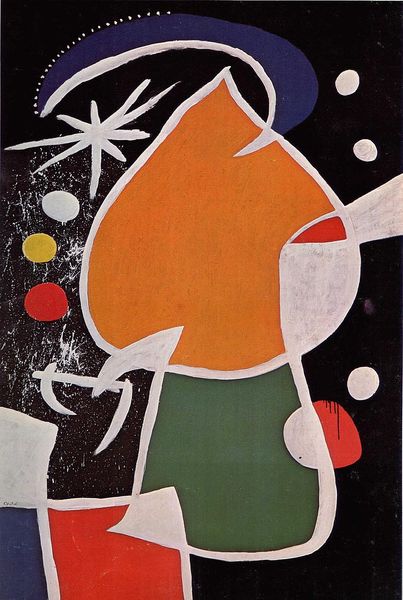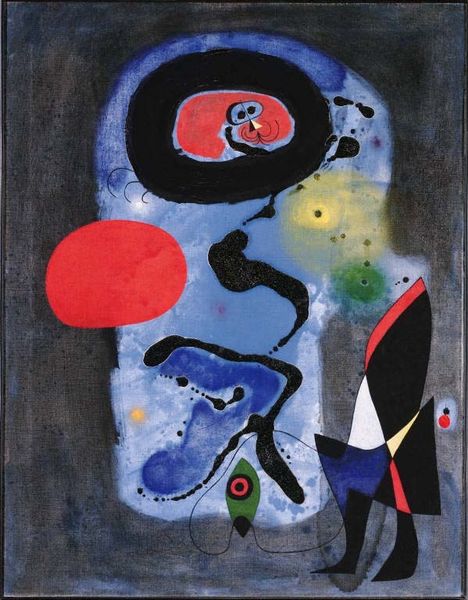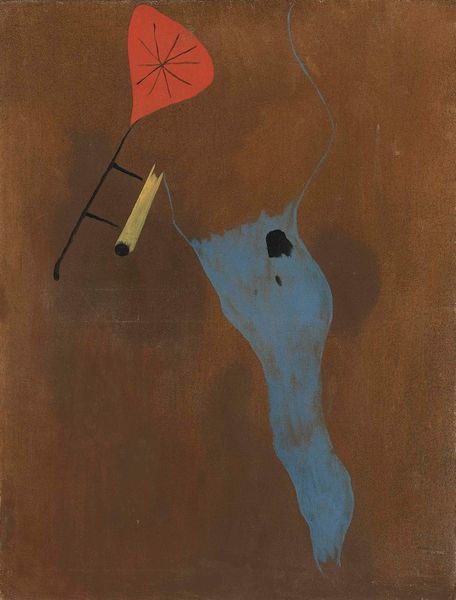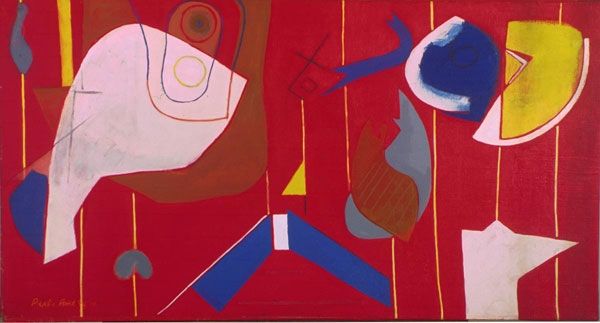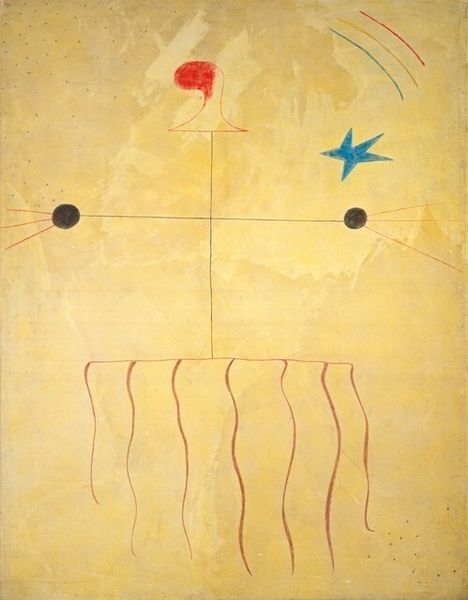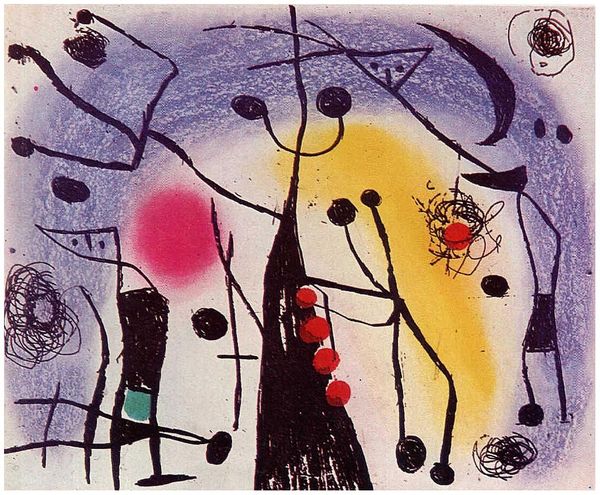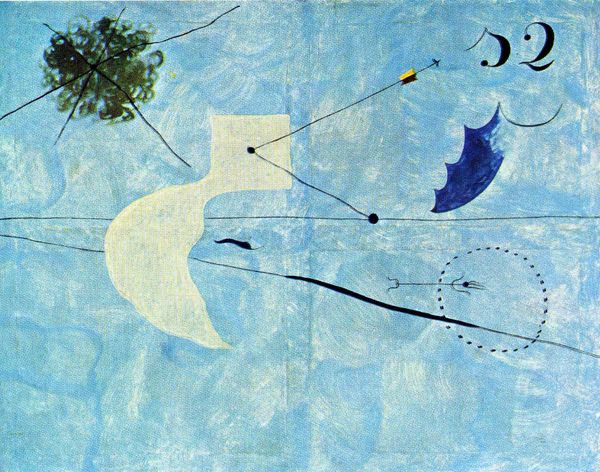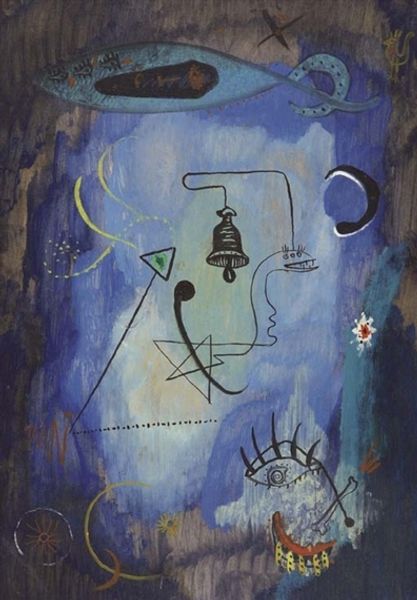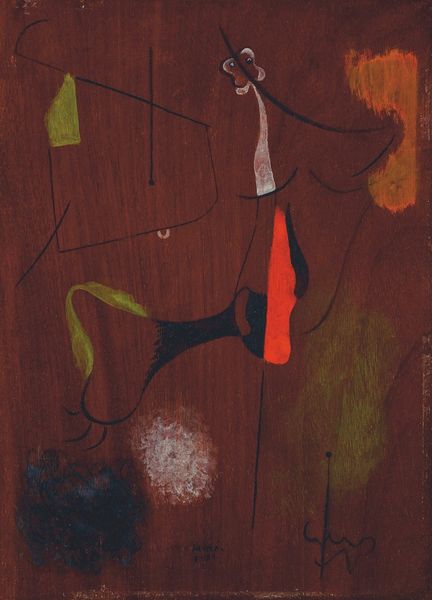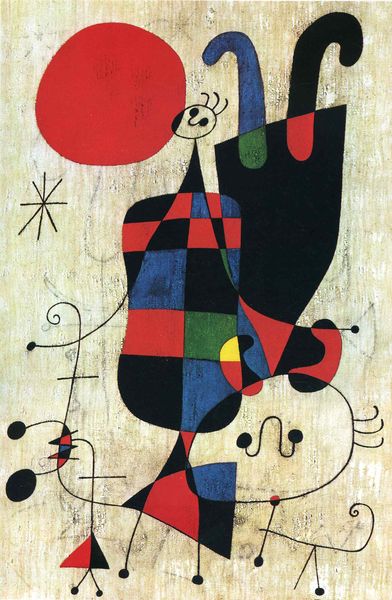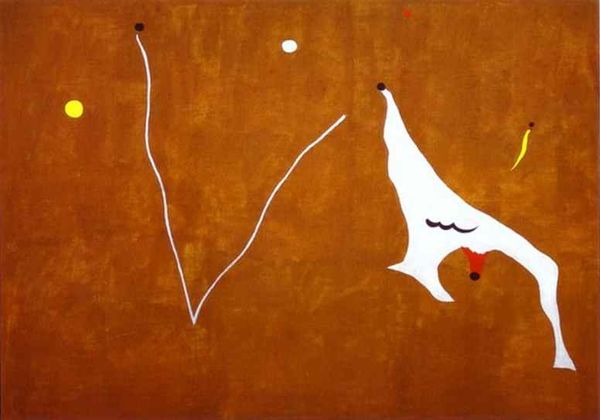
mixed-media, painting
#
mixed-media
#
abstract painting
#
painting
#
painted
#
geometric
#
abstraction
#
line
#
surrealism
Copyright: Joan Miro,Fair Use
Curator: Before us hangs Joan Miró's "Tirador in the Arc," a mixed-media piece from 1927. Editor: The cerulean backdrop evokes a daytime sky or shallow waters, but with that thick texture! I’m drawn to the stark contrast of the shapes floating within it—it has an almost playful feel to it. Curator: Indeed. Miró created this work during a time of significant societal upheaval and artistic innovation, part of a moment where Surrealism took root amidst cultural anxieties. Note the strategic composition with the geometric figures against the expressionistic application of the blue paint—the background being almost aggressively tactile, clashing beautifully with the playful forms in the foreground. Editor: The contrast in textures is really remarkable, as is the limited color palette. And that bright yellow form... Is that supposed to be some sort of abstracted animal figure? What’s fascinating is that it *almost* appears three-dimensional. The textures are integral to the experience. How was this surface achieved? What tools and methods did Miró explore in creating that distinctive texture? Curator: These were formative years for Miró and Surrealism in general; an exciting period in art, marked by experimentation, pushing the boundaries of representation against academic tradition, and attempting to engage directly with the viewer's subconscious. His method was about liberation—eschewing traditional subjects in favour of automatism and dream-like associations. Editor: Which then leads to the question of labor and value. What was it about challenging artistic norms and the embrace of "chance" that attracted Miró, and his patrons, to that practice? Was this form of liberation a reflection of changing cultural mores in Paris between the wars? I feel like I can imagine his hands directly at work with the surfaces and various applications. Curator: Absolutely! It mirrored the period's radical cultural shifts. Works like this gave shape to abstract feelings. By using recognizable forms combined with biomorphic abstraction, Miro provided access points, subtly reflecting political tensions, but in his own unique visual language. Editor: Considering the period’s anxiety around modernization and industrial output, Miró seemed interested in a return to this almost craft-based approach. The surfaces and tactility seem really vital here as a response. Curator: Precisely, and this highlights the unique position Miró occupied—responding to socio-political events through abstracting rather than depicting. It gives "Tirador in the Arc" enduring resonance. Editor: I think I agree, it does. Now I want to explore more of Miró's working processes, and what implications the texture in his work had on audiences then and now.
Comments
No comments
Be the first to comment and join the conversation on the ultimate creative platform.
